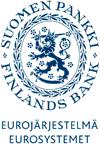 Research Discussion Papers, Bank of Finland
Research Discussion Papers, Bank of Finland
No 7/1997:
Exchange Rate, Interest Rate and Stock Market Price Volatility for Value-at-Risk Analysis
Monica Ahlstedt
Abstract: The study derives a theoretically and empirically founded
procedure for volatility estimation and forecasting of daily financial
return series for use in value-at-risk model frameworks. GARCH modelling is
applied to account for time varying heteroskedastic conditional variances
and covariances. Through univariate estimation, the historical conditional
variance models are specified within a group of twelve markka-denominated
exchange rates, a group of thirteen short-term interest rates, the
long-term interest rate and Finland's general stock market index. Within
these groups, the method of principal components is used to detect common
short-term factors driving the high frequency stochastic processes.
Spectral analysis is applied to identify the length and regularity in the
cyclical behaviour of the estimated conditional variances and their
principal components. Since there turned out to be a great similarity in
the univariate estimation results within groups of rates, GARCH estimation
on pooled data was performed to force the rates within groups into the same
model. The estimated models on pooled data were found to be integrated in
variance with closely similar parameter values for both exchange rates and
interest rates.Since a general multivariate framework is not possible to
apply to the amount of series in this study due to the huge number of
parameters to be identified, the covariances were calculated in two
step-wise ways from the univariately estimated variances. First, assuming
dependence between the autocorrelation structure of the conditional
variances and covariances, univariately estimated parameters of the
conditional variance models were used in identifying the pairs of
conditional covariances. Second, assuming constant correlations,
conditional covariances were estimated using joint information on the
correlation coefficients of the GARCH standardized residuals and the
univariate conditional variances. The first method is only applicable in
estimating covariances within groups, the second is also applied in
estimating the covariances between groups.Although the magnitude or
direction of the expected changes in rates cannot be forecast, the
estimated GARCH structure makes it possible to forecast the expected future
variances. By developing the parameter structure estimated on pooled data,
a theoretically and empirically founded procedure is suggested to replace
the usual ad hoc decision process of selecting the sample period and the
weight structure for estimating variances and covariances.
Keywords: time-dependent volatility; GARCH estimation; value-at-risk models; (follow links to similar papers)
93 pages, May 26, 1997
Before downloading any of the electronic versions below
you should read our statement on
copyright.
Download GhostScript
for viewing Postscript files and the
Acrobat Reader for viewing and printing pdf files.
Full text versions of the paper:
DP_07_1997.pdf 
Download Statistics
Questions (including download problems) about the papers in this series should be directed to Minna Nyman ()
Report other problems with accessing this service to Sune Karlsson ()
or Helena Lundin ().
Programing by
Design by Joachim Ekebom
 Research Discussion Papers, Bank of Finland
Research Discussion Papers, Bank of Finland
 Research Discussion Papers, Bank of Finland
Research Discussion Papers, Bank of Finland